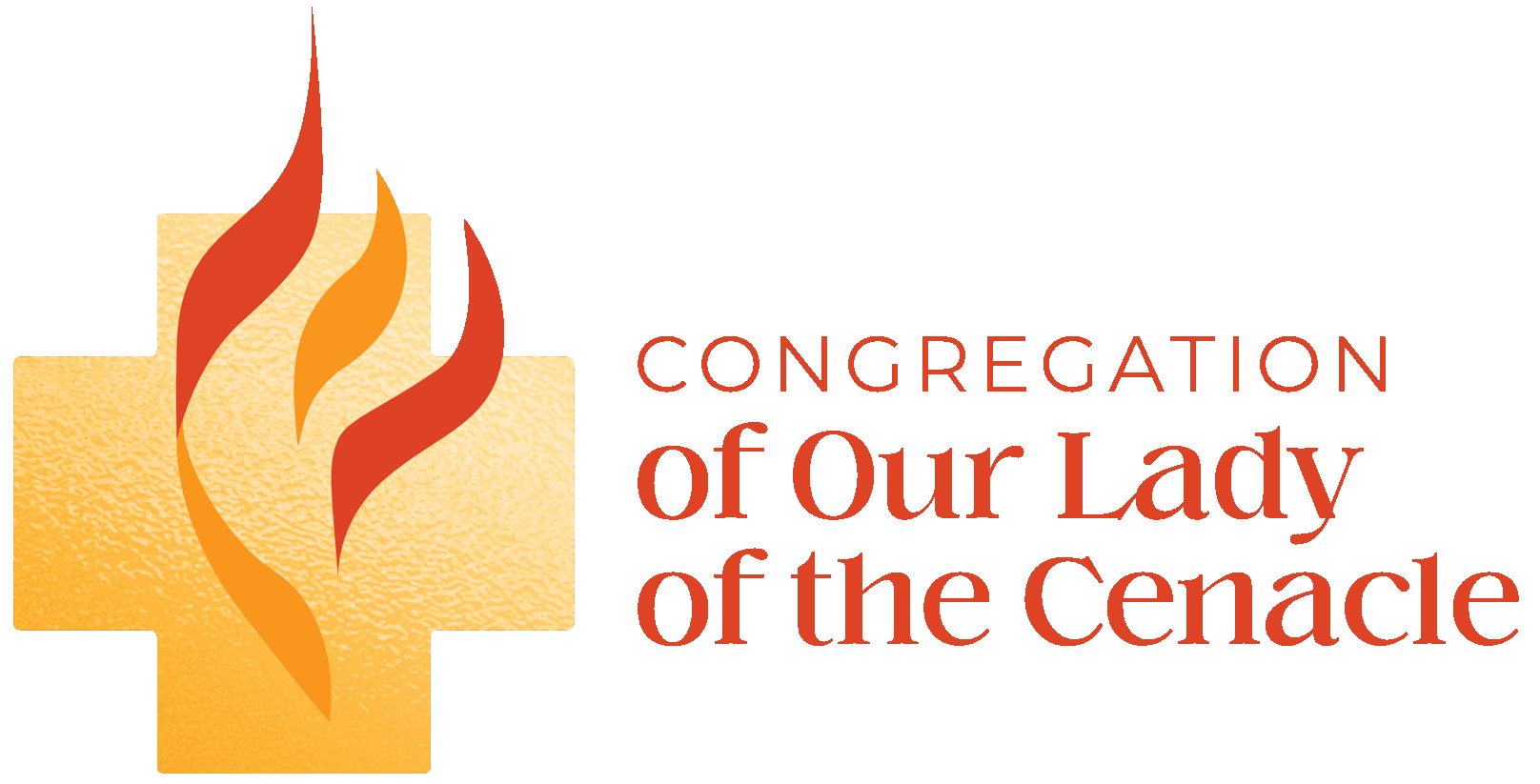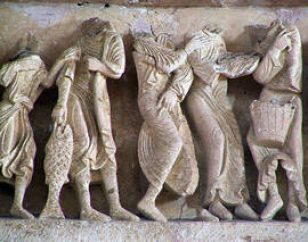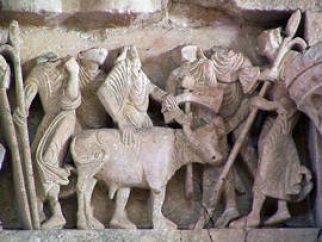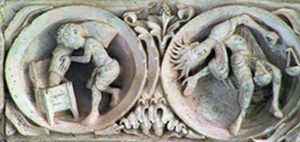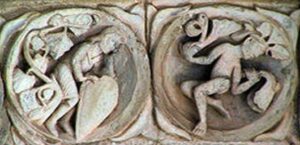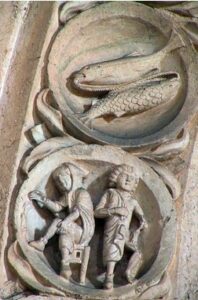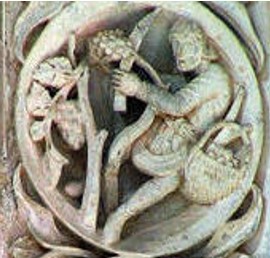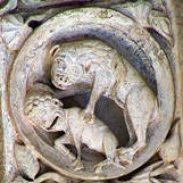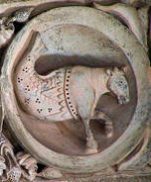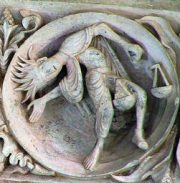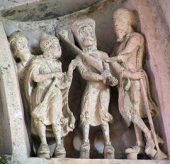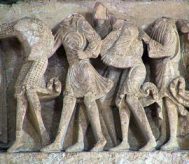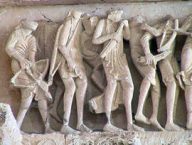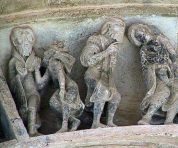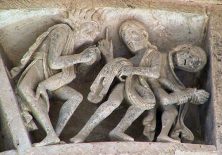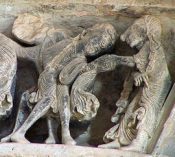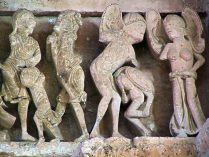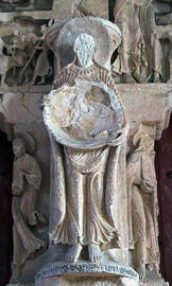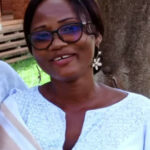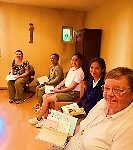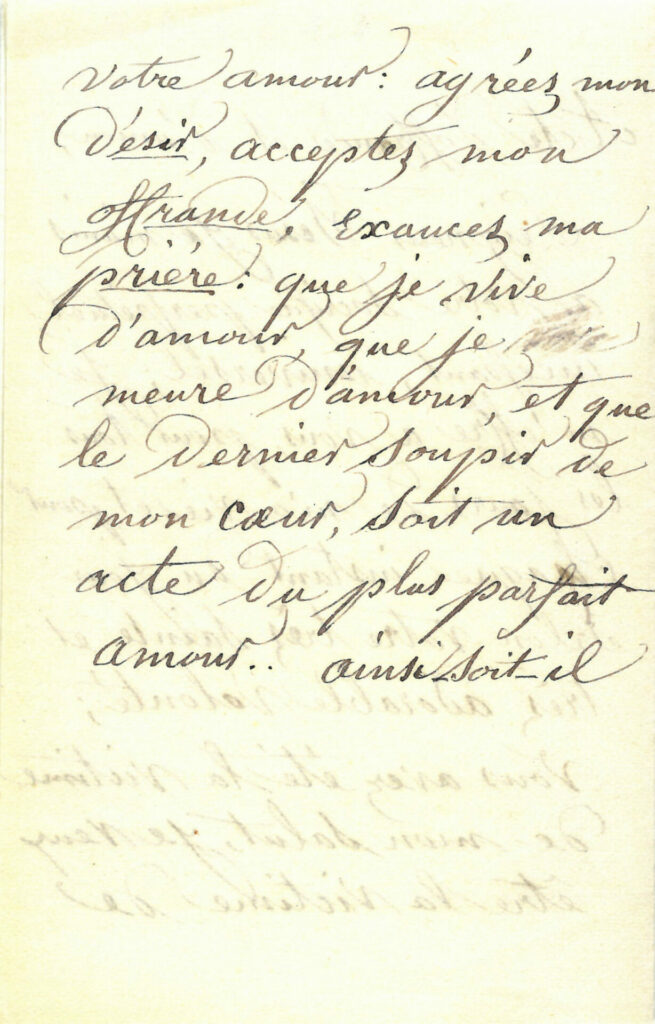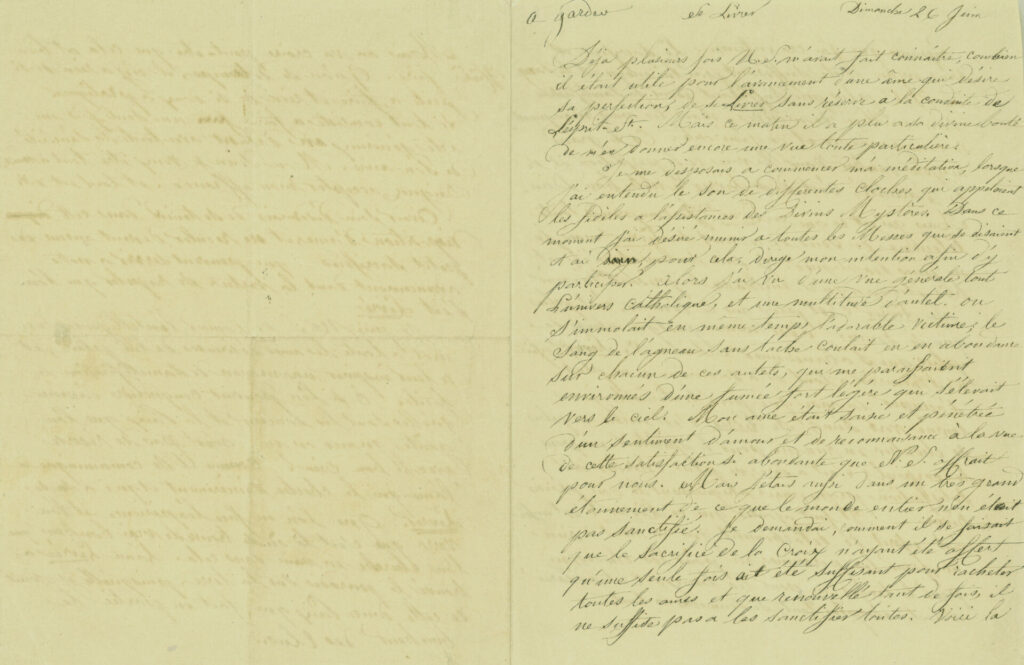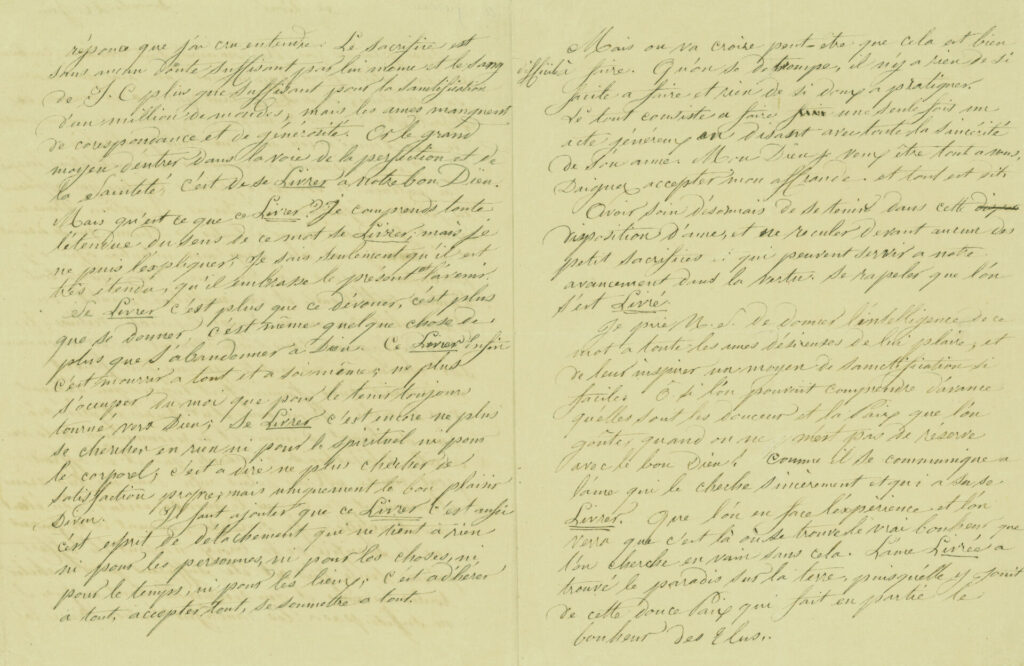The monks who commissioned the sculpture on the tympanum of the Basilica of Vézelay had already sensed how great God’s heart is, that it is more than great, that it is universal, open to all creatures inheaven and on earth, because God, the “friend of the living,”loves everything that exists.
.
“For you love everything that exists; you are not averse to any of your works; if you had hated anything, you would not have created it.
How could it have survived if you had not wanted it?
How could it have remained alive if you had not called it?
You spare all beings, because they are yours, Master who loves the living.“
Book of Wisdom 11, 24-26
.
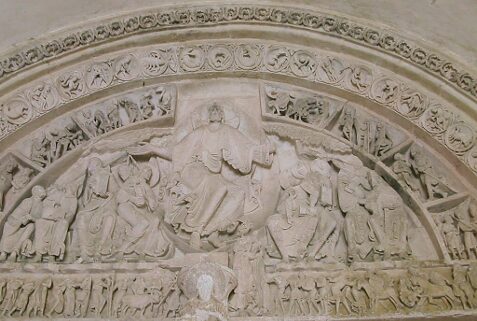
Tympanum of the portal of the Basilica of Vézelay (France), Pentecost, 1125-1130.
.
With heaven as his throne and earth as his footstool, [1] the Christ in glory at Pentecost in Vézelay appears in a limited space that may symbolise the walls of the room with the closed doors of the Cenacle in Jerusalem.
Cependant, toutes les figures qui l’entourent , show that this space is much wider. It is even limitless because the Risen Christ, victor over death, reigns over the Universe.
.
From his hands, rays spread out over the disciples who surround him
but also upon everything created.

.
For “all things were made through him, and without him nothing was made that was made.” [2].
.
He is the Word,
with God from the beginning of the world,
he is the beginning and the end of all things.
.
He is the Alpha and the Omega, the One through whom all things are created; all things are recreated, and all things are saved.
.
“He is the image of the invisible God;
the first-born of every creature.
In him all things were created,
in heaven and on earth.
Beings visible and invisible,
powers, principalities,
sovereignties, dominions,
everything is created by him and for him.
He is before all things
and all things subsist in him.
He is also the head of the body, the head of the Church:
he is the beginning,
the Firstborn from the dead,
so that he may have primacy in all things.
For God saw fit
that in him should dwell all fullness
and that all things through Christ
be reconciled to him at last,
making peace through the blood of his Cross,
peace for all beings
on earth and in heaven.” [3]
.
|
|
Offering bearers | |
.
The creation described here is the unfolding of the origin, the emergence of a new creation that transforms everything and reunites time and space.
.
Everything that repeats itself cyclically in the rhythm of the seasons takes its place in the fullness of an eternal present that the Spirit brings to birth.
.
What was particular to a given instant or moment becomes universal.
The activities described in their particularity of space and time – the seasons, the work in the fields that mark out the zodiac – are caught up in this movement towards the universality of the new creation, like a universal liturgy that transcends time and space.
.
The Zodiac shows various agricultural or craft activities that mark the seasons.
| For example, a farmer harvests a sheaf next to a lion (July-August) devouring a person. |
| Another farmer pours the harvested grain into a hutch next to the scales (September-October) of which the hair is on fire. |
| A soldier sitting under a tree cleans his shield while spring dances. |
| A man warms himself, another dresses next to the fish symbol (February-March), etc… |
| A farmer threshes his harvest with a flail while another harvests his vineyard. |
.
All go about their human occupations while Christ sends his Spirit upon all living beings and the whole universe, whatever the time or place.
There is no being, no place, no time that cannot be the receptacle of this gift!
.
“When the day of Pentecost was fulfilled, they were all together in one place. […] They saw tongues appear, which seemed to be of fire. They parted and came to rest on each of them. And they were all filled with the Holy Spirit…” [4]
.
The Reign of Christ spreads over his apostles and the whole universe, transfigured by him and in him, yet the notion of spiritual warfare has not disappeared.
Evil and its temptations are not denied in this cosmic representation, but they are expressed in a different way, in a perspective imbued with the hope and faith of Pentecost and the gift of the Spirit. God is the victor over the world, and this victory is already here. The Kingdom of God is already unfolding on earth, and even if this unfolding has not yet reached its fullness, the first fruits are visible.
.
A breach has opened in the time of history. The Zodiac tells us this in images.
.
The three medallions above Christ’s head in the centre of the tympanum between the signs of Cancer and Leo, represent two dogs, an acrobat and a mermaid.
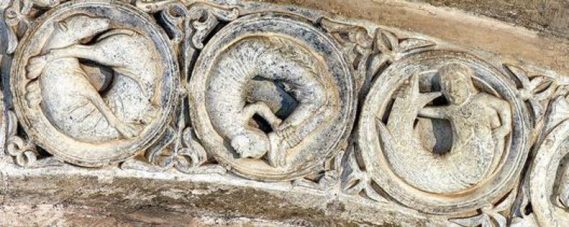
In ancient and medieval astronomical conceptions, the space between Cancer and Leo constituted one of the two “gates” of communication between heaven and earth. On the portal at Vézelay, between these two signs of the Zodiac, just above the head of Christ, is a representation of the anima hominum, the point of passage from heaven to earth, which is also the point of passage of the summer solstice and therefore of light, in the form of three forms wrapped around themselves: two dogs, an acrobat and a mermaid.
.
These three kinds of wheels in which the figures spin round and round, symbolise bestiality, violence, perversion, seduction, lust, and other dangers that threaten human beings and can dazzle them. Through this passage between heaven and earth, located in this sculpture above his head, Christ, who is the “Door,” [5] interrupts the endless circle of years to give access to eternal life. Christ, who is the true light, bursts into this cycle of time to drive out evil, false light and the power of darkness. [6] Through his coming, Christ creates a definitive and irreversible break in the cycle of time marked by the stars, opening up the eternity of salvation to the world and to every being.
.
Other sculpted details tell pilgrims not to forget that the spiritual battle on earth is not over, that the Reign of God is not yet complete and that today is still a time of waiting, hope and vigilance. This is the case, for example, with the sign of Leo, which devours a man; with the signs of Capricorn, Taurus and Aries, whose bodies end in fishtails like deceptive mermaids; or with the sign of Libra, which becomes a figure whose hair is ablaze with long flames. These are warnings engraved in stone, designed to keep pilgrims alert and vigilant.
.
Leo | .
Taurus | .
Libra |
.
The gift of the Spirit in the portal of the Basilica of Vézelay concerns daily life, the cycle of the seasons and the work of humans, but it also extends to the farthest reaches of the world. Living beings, in the uniqueness of their personal and collective histories, as well as in the diversity of their origins that make them many peoples, find themselves caught up in the movement of this new creation that carries them towards Christ, to become one in him.
.
“For God saw fit that in him all fullness should dwell, and that through him all should
be reconciled and that through him all things on earth and in heaven might be reconciled.” [7]
.
Thus, around Christ, whose hands radiate the Holy Spirit, all the known peoples of the world are represented, with their own particularities, because they are destined to receive the Spirit.
|
|
|
Armenians wearing skates | Phrygians recognisable by their bonnets | Romans in coats of mail |
|
|
|
Scythian archers | Byzantine carrying a Greek fire staff | Pygmies |
Parthians, Medes and Elamites, inhabitants of Mesopotamia, Judea and Cappadocia, the provinces of Pontus and Asia, Phrygia and Pamphylia, Egypt and the Libyan regions near Cyrene, Romans passing through, Jews by birth and converts, Cretans and Arabs, all seem to be represented in this tympanum.[8]
But as if this were not enough to speak of the universality of the gift of the Spirit, other peoples are represented with more astonishing, even disconcerting attributes, even defying nature and current scientific knowledge.
Drawing heavily on works such as the natural history of Pliny the Elder, a Latin naturalist and writer from the early Christian era, sculptors in the Middle Ages depicted in stone the strange peoples living at the ends of the earth.
Dog-headed humans (cynocephalus) who cannot speak and can only bark; creatures with ears so (the Panotians or Panotii) that they can wrap themselves inside them to sleep, beings with only one foot (sciapods), but of such a size that, to defend themselves from the heat, they topple over onto the ground, their foot covering them entirely with its shadow; still others called pygmies, no more than a cubit high and living no more than eight years…
.
|
|
|
Cappadocians, a people of Siamese brothers | Ethiopians with flattened noses(according to Herodotus) | Panoti, with big ears in which they wrap themselves to sleep |
.
|
|
Pygmie climbing a ladderto ride a horse | Cynocephalic men(dog-headed) |
.
All the peoples of the earth, however extravagant they may be, gathered around Christ, the only Redeemer, are included in God’s plan of salvation and called to become his disciples and apostles, bearers of the Good News to the ends of the earth.
Having become Christs on earth through the Spirit received at Pentecost, they are sent by the King of the Universe to bear witness and make disciples.
.
All authority in heaven and on earth has been given to me.
Go therefore and make disciples of all nations.[9]
.
Go into all the world and proclaim the Gospel to all creation.[10]
.
This is how we recognise the figure below Christ’s feet:
|
left pedestalwith two other apostles |
John the Baptistshowing the lamb |
right pedestal:Peter and Paul |
.
.What is received cannot be kept! Sent by Christ , John the Baptist, Peter, Andrew, James and John… but also Paul, Zacchaeus, Mary Magdalene, Martha, Tabitha, Lidia and so many others, simple sinners, seamstresses, tax collectors or Pharisees and persecutors, all having responded to Christ’s call, clothed in the Spirit, immediately became bearers of the Good News throughout the world, to the ends of the earth.
King of all the peoples of the earth, master of time and history who interrupts the endless cycle of the seasons to give access to eternal life, the beginning and end of everything, Alpha and Omega, Christ still calls today on every continent, rich and poor, the most humble and the greatest, whatever their position in this world and in history, whatever their age and length of life, are called to receive the Spirit and bring the Spirit to others while recognising in every other disciple of Christ another bearer of the Spirit.
.
“I will put my Spirit within you and make you walk according to my laws.”[12] .
.
In this way, the way of being of human beings indwelt by the Spirit of Christ is transformed by a force that comes from God himself. The sin that stems from human beings not being in tune with God recedes, allowing the gift of the Spirit to penetrate hearts, adjust them to Love and send them out into the world to spread the sacred doctrine among people of every state and condition.[13]. Par eux, icônes du Christ, le règne de l’Esprit peut se répandre de manière nouvelle offrant béatitude et bonheur à ceux qui voudront devenir disciples.
So, it is here and now that Christ is Saviour. It is now because it is always, here because it is throughout the universe; it is for me because it is for every human being of every race and every nation.
.
The Spirit, which offers itself without limit to every living being in the Universe,blows where it will, no one knowing where it comes from or where it is going! The Spirit offers itself without exception to anyone, as we can imagine from these sculptures, whether they are standing by the fire in winter, resting in their homes, working in the fields under the scorching sun, in the office or in the factory, whether they are dwarfs, giants, blacks, whites, Africans, Asians, rich or poor… the Spirit is given to each and every one of us, to everyone, without discrimination, without distinction and in abundance, as long as we are willing to receive it… The challenge lies in this openness and this reception!
.
The Spirit blows where it wills, and when it gives itself where we never imagined it could, we are sometimes astonished. This is particularly true when he gives himself to those we do not like, those who disturb us and whom we reject.
.
By who he is, the Spirit invites us to have a broad and generous spirit and inner freedom. His prodigality is an invitation to widen the space of our tent to welcome the places and people through whom he manifests himself rather than trying to assign him the places where we think he should act. This way of being is far removed from certain sterile immobilities that lead us to say “we have always done it this way,” “in my day it was better…,” from certainties that take the form of “you just have to…”, “we need to…”,from those convictions that make us find ourselves “intelligent”… those who think like us, or from a fixed moralism of the pure knowing what is good and what is bad and finding themselves just in judging others. No, the Holy Spirit does not tend towards such conformism or uniformity.
.
He loves us without exception and without exclusion.
He calls us to love without exception and without exclusion.
.
In his Universality,
the Spirit of God at Pentecost
expands our hearts,
widens our gaze,
refines our listening
to the originality of all beings.
Sr. Ghislaine Pauquet r.c.
-
“Thus says the Lord: The heavens are my throne, and the earth is my footstool. (..) My hand made all this, all this is mine says the Lord.” (Is 66:1-2). ↑
-
Jn. 1:3. ↑
-
Col. 1:15-20 ↑
-
Acts 2:1-4. ↑
-
John 10:1-10. ↑
-
John 1:4-5 and 9. ↑
-
Col. 1:19-20. ↑
-
Acts 2:9-10. ↑
-
Mt 28:19. ↑
-
Mk 16:15. ↑
-
Jn 1:36. ↑
-
Ez. 36:27. ↑
-
Spiritual Exercises n ° 114 and 146. ↑
